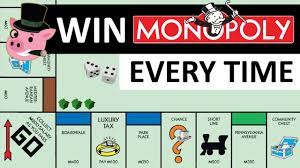Poker Rules – 7 Card Stud Hi Low

This is a combination of 7 Card Stud and Razz where everyone plays differently. You have to learn the differences between these games or else you are apt to lose quite a lot of money.
The first thing to remember is that 7 Card Stud is a high card game where the highest card wins. If no player has a high card, the next highest card would be dealt then. Two Pair is the same, but you have 2 pairs, and both pairs must be high cards. Three of a Kind is the same, but you have 3 of a kind. Straight is the same, you have 3 cards in the same sequence, but not necessarily the same suit. Flush is when all 5 cards are the same suit (not in the same order).
Next you need to understand the blind structure. In High Card, the small blind and the big blind are posted in front of you. The big blind is the only bet that is bigger than the minimum bet. The blinds are always posted in front of the player. The small blind is usually placed after the dealer.
Now you need to learn about the other players. The first person you need to know is the player in the big blind. The big blind is the player to the left of the dealer. When playing hi lo poker, the big blind is the player immediately to the left of the big blind. The small blind is the first player to the left of the big blind.
The next player you need to know is the short stack. The short stack is the player on the short end of the table. Like the big stack, the short stack is always placed in front of the dealer. Once the cards are dealt, the person in the short stack is the first to bet.
On the next hand, the dealer deals another card face up to the small blind. This is called the flop. The cards can be used by anyone in combination with the cards in their hand. Another player must play another hand after seeing the flop if their hand is less than or equal to five. However, if the player in the short stack has a better hand, the player in the big stack must either bet or check (do nothing and let the other player bet).
After the turn, the dealer deals the river card face up. This is called the river card. Players can use the three of hearts in their hand to complete their poker hand and the two cards in their hand can be used in combination with the five cards in the flop to create a hand. If all five cards in the flop are used, it is a hand percentage of about 52.4%. If the five cards in the hand are in the same order, hand percentages are128% and the banker percentage is only 8.7%. However, if no one has made a hand, the banker always has the advantage.
Out of all these kartupoker hand tactics, what separates the professionals from the amateur is experience. Pro’s learn what works in poker over a period of time and discover how to win more than they lose. As a professional player, you know the value of controlling the poker hands of opponents, reading their bets, calculating the pot odds, and realizing when to fold a bad hand. The amateur players just learn how to get a good hand and forget about the others. Looking back at it, it’s pretty simple to see who has more experience. But there is one more thing I want to discuss.
Casinos hire people to count cards for them. Basically, the casinos want to be able to tell if a player is counting cards or not. There is a reason behind this, I believe it’s because with more hands, more cards can be dealt, and the casinos want to minimize the competition. If more cards can be dealt, the casinos would not need as many workers to shuffle, stack, and handle them. Again, I don’t blame the casinos for this idea. Do you know any card counters? Not many people so they are clearly not worried about employment prospects. Casinos know that without a big edge they will never be able to compete.
My conclusion – if you want to win at poker, then you had better be prepared to lose. To learn more about poker strategy, and how to improve your poker hand techniques, continue on to Part 2.


